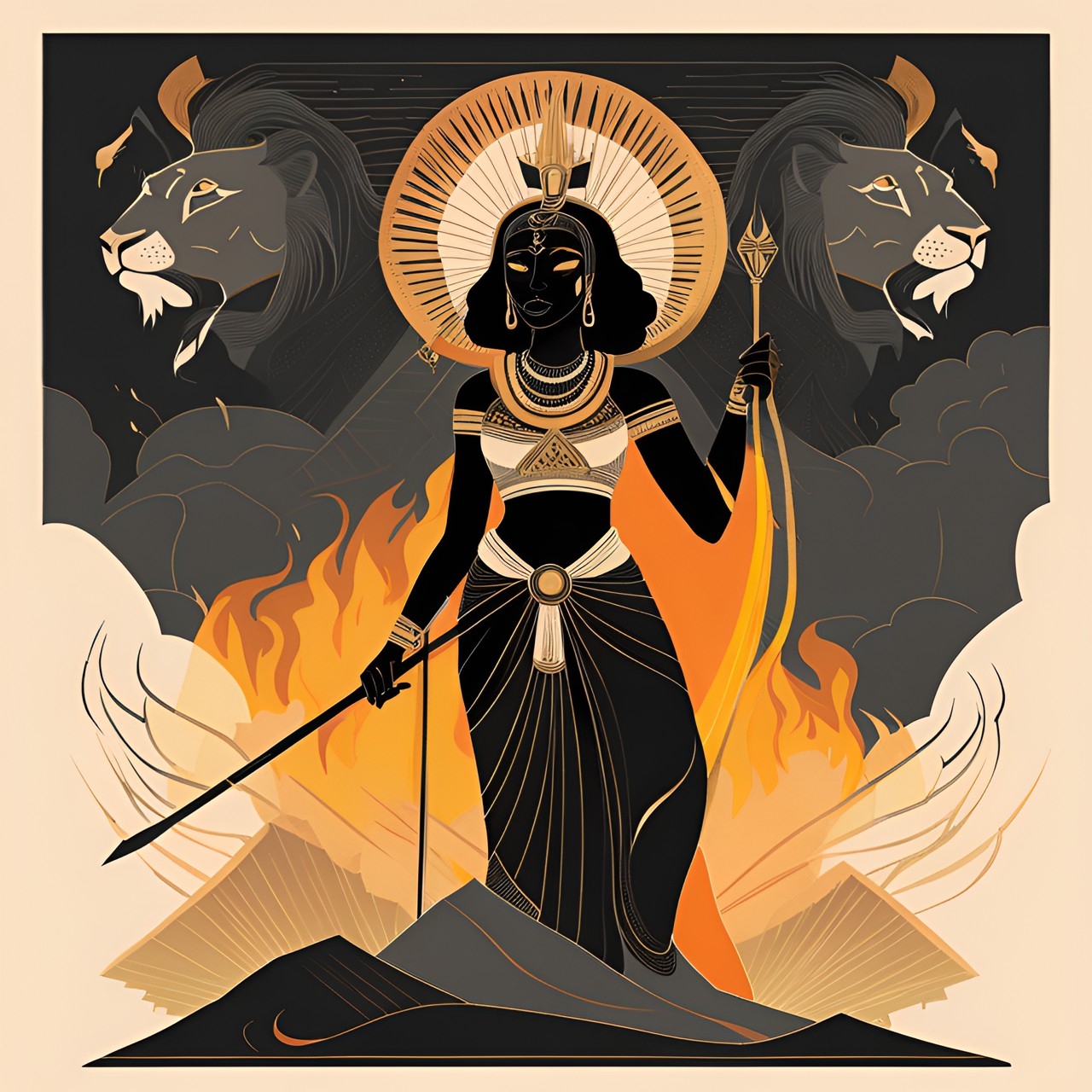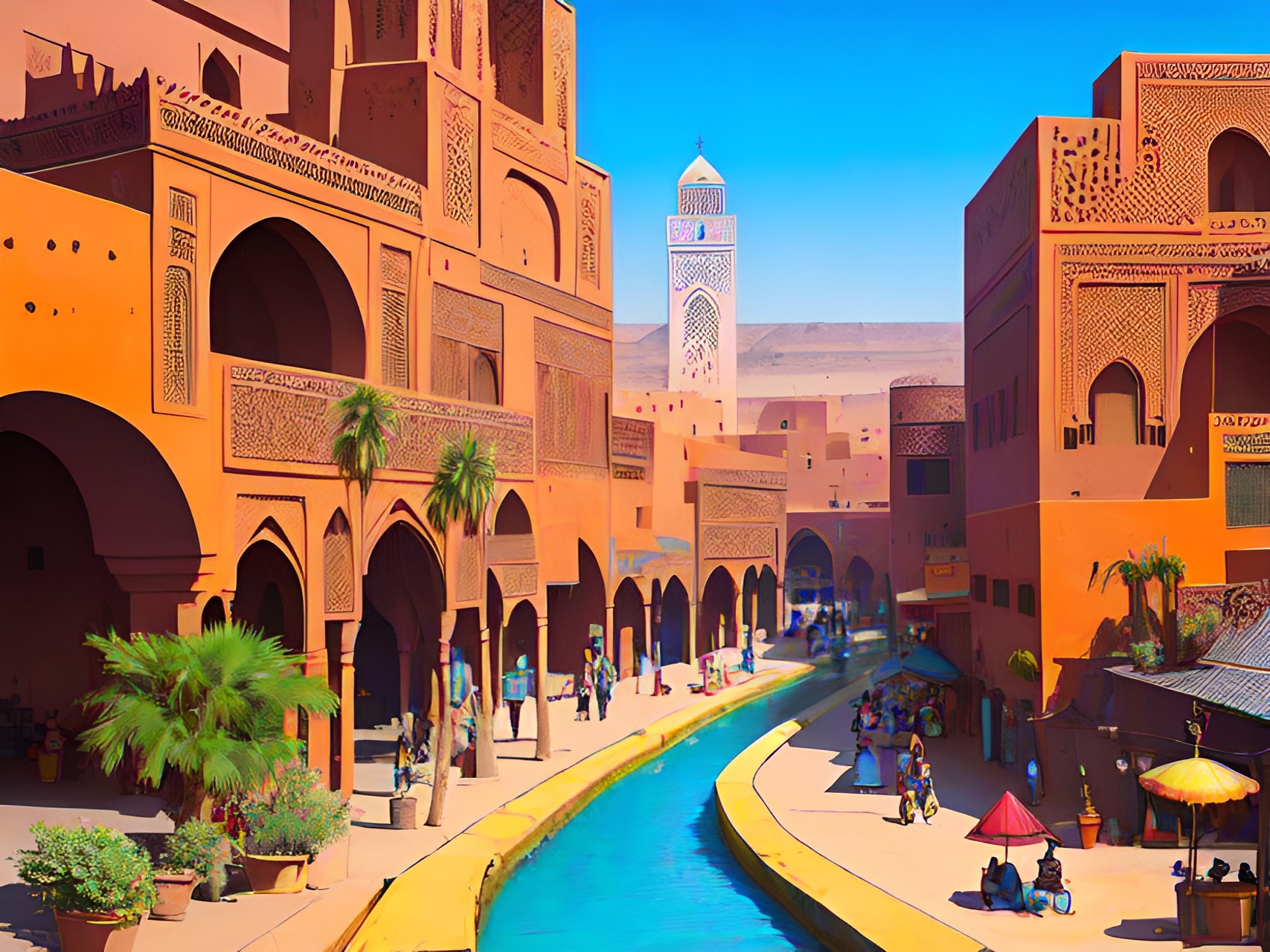Birit Narim
Three rivers welcome the waters cascading from Dawn Ahrayn above, the Purattu and Idiqlat flowing north while waters flowing south merge with al-Nil River. The radiant waters of Dawn Ahrayn are the lifeblood of Birit Narim. Everywhere these waters touch, plant life springs in abundance, making these fertile lands sought after especially by neighbors from less verdant desert territories. When Lithmor still walked Emynea, she built her Seat here in order to watch over Birit Narim but now that their goddess is gone, they have fallen prey to Ilnid and his Khalifah al-Rasul.
There are two main ethnic groups indiginous to Birit Narim, the Siryan and Kurdish peoples. The Arabiyy have also made themselves at home. Meanwhile, inhabitants of Dawn Ahrayn are far more mixed. They descend from those handpicked by Lithmor and bestowed with the strongest of her blessings, once serving their goddess directly. Now they guard her Seat and the headwaters spilling from Dawn Ahrayn. However, there is a majority of Masriyyin and sub-Shamsi Alkelbulians among them. Within Birit Narim, Lithmor went by the name Shamash, the mythological goddess of the sun, justice and divination. It is said when she was slain, a double eclipse occurred, the sky going dark in her absence.
Alternate Names
Mat Akkadi
Mat Babil
Babilim
Geography
While those in southern Birit Narim rely on rain to water their fields, irrigation by canals becomes more prevalent the further north one travels. The climate also becomes colder and colder but the solar energy in the Idiqlat and Purattu rivers warms the earth and air it touches, a benefit which disipates farther from these waterways. Melting snow further dilutes the solar water in the marshes, the water gradually losing its shine by the time it meets the sea. Outside of agriculture along the riverbanks, nomadic pastorialists guide their herds of sheep, Tamadla Goat and Shamsi Camel accroding to the seasons. In the summer, they graze on river pastures and in winter, the wet season, they move to the fringes of the desert. Fishing is more common in northern Birit Narim amid its marshes.
Left to their own divices, the tribes and settlements of Birit Narim aren't prone to uniting into one large nation. They prefer the formation of city-states, fragmented tribes in montane villages or living nomadically, sleeping in tents. This isn't to say their civilization wasn't advanced. In fact, it was a center for human development and one of the few reliably fertile locations in northern Alkelbulan alongside Kemet. Civilizations large and small rose and fell continuously between these two rivers and many kings of Birit Narim still live on in legend. However, these small, vying powers lost all control beginning with the conquest of first Alexandros and then Ilnid. A Quiris-Hellenes empire maintained a tight grip even after their conqueror met his end, a few small kingdoms rising against them but never quite pushing them out. They might have recovered with Lithmor's aid but once she was sealed away, and they fell under the abrasive reign of Ilnid, not a single kingdom has risen successfully to oppose Arabiyy control. Much like their neighbor Kna'an, Ilnid holds onto Birit Narim with an uncompromising grip.
History
Mat Akkadi
Once Rimuus came into control, he unleashed a violent campaign against Saggigga city-states, slaughtering more than 50,000 of them and enslaving or expelling nearly as many more. He even went so far as to erect monuments recording and proclaiming his genocidal exploits, struggling against rebelions until his own courtiers assassinated him. Rimuus was succeeded by his elder brother, Maanishtusu, who became renown his victory in a naval battle against 32 kings from al-Arabiyyah.
While Birit Narim was well organized and productive during his reign, resulting in a high surplus of food and the construction of extensive public infrastructure, Naraam Sin invaded many neighboring lands and confiscated their wealth to further these advances. His attempt to deify himself pushed Birit Narim into the Great Revolt. Leading up to this, Naraam Sin began tightening his control over his city-states by sending his sons as governors and his daughters as high-priestesses—a tactic later adopted by Ilnid in Khalifah al-Rasul. He kept only the most loyal to him as governors. Despite his attempts to consolidate power, a coalition formed amid his city-states and rebelled together against him. Yet much like his grandfather, Naraam Sin possessed powerful fire magic, believed to be favored by Ferith, and emerged victorious battle after battle. It was following these victories that he proclaimed himself divine and named himself god of his capital, Akkan.
Fall of Akkadi
May the land that destroyed Enku be treated as our temple has been treated!
Heads will fill the wells and brother will not recognize brother!
May young women be cruelly killed and your holy walls resound with mourning.
Akkadi, your men will be deprived of strength, laying idle all day.
May this make the cities die of hunger!
Your citizens will lay hungry in the grass, forcing your men to eat the coating on his roof, to chew the leather hinges on his doors.
May depression descend upon your palace, once built for joy!
The grass will grow long on your canal banks and highways, choking the wheels of wagons!
Moreover, may wild rams and alert snakes of the mountains allow none to pass and let brackish water flow where fresh water once flowed for you!
If someone decides,
"I will rest in Akkadi"
May he not enjoy the pleasures of a resting place!
—Based on The Curse of Akkad
The statement coming from Enkur was disquieting.
Because of Enlil, all Akkadi was reduced to trembling.
Holy Inanna (Ferith) abandoned the sanctuary of Akkadi, she tore away the gift of battle from the city and handed them over to the enemy.
Ninurta (Fliral) took the jewels of rulership, the royal crown, the emblem and the royal throne.
Utu (Lithmor) took away the eloquence of the city.
Enki (Wylrith) took away its wisdom.
An (Rylis) took away its fearsomeness.
Inanna took away its weapons.
The life of Akkadi's sanctuary was brought to an end and all the cities were watching it.
Like a dying dragon, Akkadi dragged its head on the earth and they jointly deprived it of honour as in battle.
—Exerpts from The Curse of Akkad
Enlil, the roaring storm that subjugates the entire land, the rising deluge that cannot be confronted lifted his gaze towards the mountains, and made all the inhabitants descend.
Messengers no longer travelled the highways.
Prisoners manned the watch.
Brigands occupied the highways.
The doors of the city gates of the Land lay dislodged in mud.
As it had been before the time when cities were built and founded, the large arable land yielded no grain, the inundated canals yielded no fish, the irrigated orchards yielded no syrup or wine, the thick clouds did not rain.
People were flailing at themselves from hunger.
Dogs were packed together in the streets and when men walked there they would be devoured.
Heroes lay dead on top of heroes, the blood of traitors ran upon the blood of honest men.
—The Curse of Akkad
Mat Babilim
Whether by Lithmor's guidance of the rule of Hammurapi, Babilim re-established trade routes throughout Birit Narim, bringing about economic stability. King Hammurapi's armies expanded Bibilim until it stretched throughout most fertile areas of Birit Narim by his thirtieth year as king. He was also known for his diplomacy, his divine support furthering his reputation among his peers and securing oaths of neighboring kings to Lithmor. Bibilim would go one to control Birit Narim long after his death. However, his dynasty itself quickly declined under the rule of his son, Babilim falling under the control of outside powers including the Aturaye, Kassites and Hatami. In fact, the Aturaye destroyed the original city and rebuit it. Under the control of the Aturaye, King Nabuaplausur began his reign of Mat Babil. Both the economy and population boomed amid his rule, allowing a similar boom in culture, artwork and architecture. Lithmor became very involved with the city of Babil and a major patron to these cultural pursuits. For the people of Babil and Lithmor, this was a golden age but, for those on the edge of this empire's sword, it was an age of terror.
When their deceit was discovered, Lithmor was furious. She hadn't been wronged badly enough to claim divine wrath and instead sought out a champion to fight for her. In the meantime, Lithmor rose her Seat, palace and temple into the sky above Babil. From there she watched over the city and in fact the whole region with her light magic. Eventually, she settled on Kurus of Parsa as her champion. She supported and gave Kurus one of her strongest blessings, guiding him in his conquest across Parsa and eventually Birit Narim. When he finally set his eyes on Babil, Lithmor let him into the city herself. Kurus continued his conquests with Babil as his capital, creating the Xsaca Empire and claiming he was restoring order to Alkelbulan as Lithmor's champion. It was also at this point Lithmor began collecting followers to guard and defend her Seat, one by one, creating Zalag Ennun. Only these individuals were allowed into the newly founded Dawn Ahrayn which expanded out around her Seat.
Fall of Babilim
Dawn Ahrayn, carefully watched over but regulated by Lithmor and Zalag Ennun, watched over Birit Narim from their lofty seat as the famous conqueror Alexandros overtook Mat Babilim, introducing Quiris-Hellenes rule from Eluziar. Control over Birit Narim swung between the Irani Eransahr Empire and Hellenes Arsacid Empire until the Downfall of the Erlithmanil shook the stability of all of Emynea. The Rasidah period of Khalifah al-Rasul began and the Arabiyy poured into Birit Narim under Ilnid's guidance. This is perhaps one of the most tumultuous periods of history in this region, Ilnid forcing all those his followers conquered to convert to his branch of Islam al'Rasul, executing, expelling or enslaving all who refused. Birit Narim still remains under the control of Khalifah al-Rasul, any remaining devotees of Lithmor guarding her Seat and awaiting her revival.















Comments